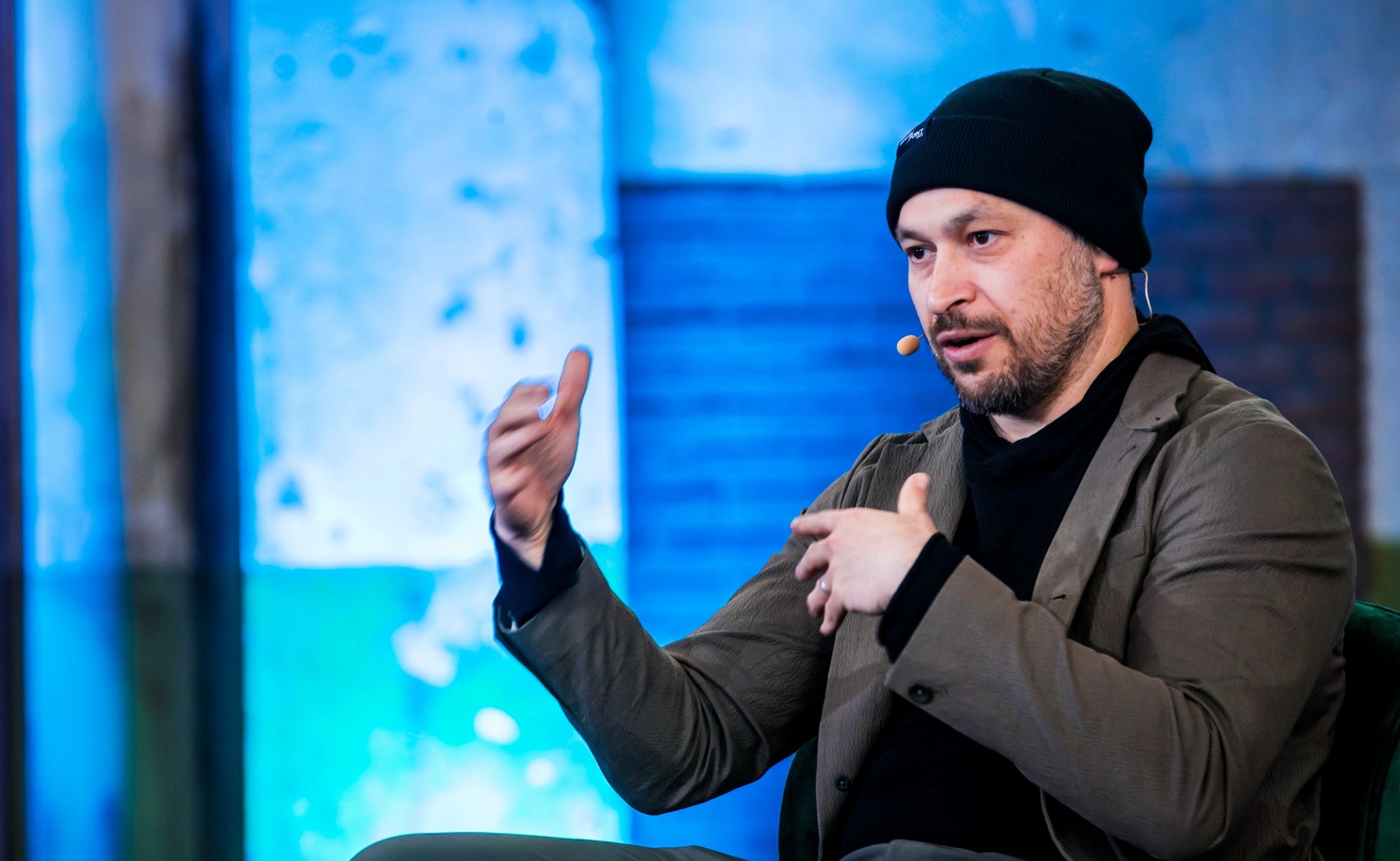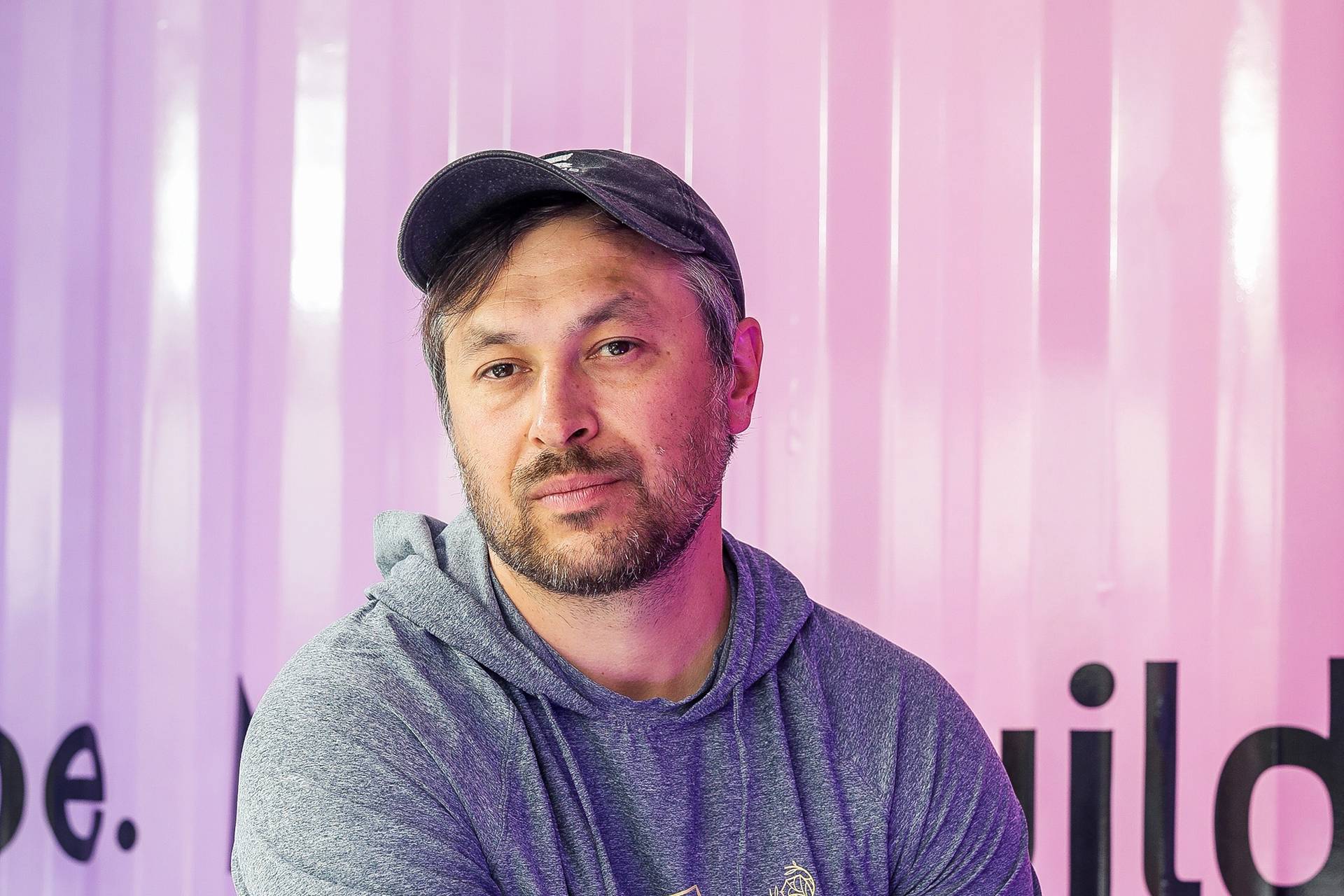Anatoly Yakovenko
Anatoly Yakovenko is the CEO and Co-founder of Solana. Prior to Solana, he was the team leader for developing operating systems at Qualcomm, distributed systems at Mesosphere, and compression at Dropbox (service). [1]
Education & Personal Life
Yakovenko was born in Ukraine and later immigrated to the United States, where he obtained his degree in Computer science from the University of Illinois at Urbana–Champaign in 2003.While growing up, he enjoyed making bows and arrows, and when he was a teenager, he liked building computers and programming on early versions of Linux. His biggest influences included Kafka, Burroughs, and Godel. He was involved in a project building Voice Over Internet Protocols (VOIPs) in South Central Illinois as a college student. Due to this experience, he received a job interview with Qualcomm, a company that was working on similar technology, and then moved to San Diego.
Career
Yakovenko was one of the Co-Founders of Alescere, a Voice over Internet Protocol (VoIP) startup, where he led the development of SIP and RTP protocol stacks and server components for a VoIP system for small businesses.
Afterward, he started continued his career at Qualcomm in 2003. After working for 12 years, he was given the role of Senior Staff Engineer Manager, a position he held for almost 3 years which ended in July 2016. At Qualcomm, he performed several roles and carried out several tasks, some of which include:
- Lead Architect on a team of 10 for high-performance Hexagon DSP off-loading software stack on Qualcomm chipsets for next-generation applications.
- Commercial applications including Augmented Reality, Virtual Reality, 3D Camera processing, 4K video post-processing, and GoogleX’s Project Tango.
From July 2016 to April 2017, he was also a Software engineer at Mesosphere, now known as D2iQ, where built a distributed operating system for the firm.
Before the creation of Solana, he worked as a software engineer at Dropbox from May 2017 to October 2017. While at Dropbox, he focused on distributed systems and compression.
Blockchain
Anatoly initially tried mining Bitcoin when it was first released. However, he later became more interested in Ethereum and the Ethereum Virtual Machine (EVM) because he saw it as being more innovative than Bitcoin, although he still saw it as similar to JavaScript. In 2017, he and some friends were considering starting a cryptocurrency mining startup using graphics processing units (GPUs), where they planned to use the GPUs for deep learning tasks to offset the costs of the startup. While Anatoly was originally more interested in deep learning than cryptocurrency, he eventually became interested in the later topic regarding the question of “How do we solve scalability?”. [14]
I started thinking about how we solve scaling for these kinds of problems at Qualcomm with wireless protocols and that’s what really got me to go deep down the rabbit hole.
Solana
Anatoly Yakovenko founded Solana in 2017. He is also the author of Solana's original whitepaper. Although the project has gone through outages and hacks, the ecosystem has been steadily growing.[15]
Yakovenko and his team created a new consensus algorithm called Proof of History (PoH) to attain this goal. With the implementation of PoH, the Solana blockchain can handle up to 50,000 transactions per second, making it one of the fastest blockchains globally. [17]
In 2022, during his interview at Messari’s annual conference Mainnet, he expressed how Solana was able to path its way to be one of the major layer 1 protocols: [18]
I’d love to say that it was like brilliant strategy, but it was really I think a function of necessity. We never had a ton of runway. There are always like 20 months or lower. So 12 engineers, a very scrapy team, over two years, we built the bare minimum to prove that a fast blockchain that has parallel execution is possible. That meant no EVM support, no Ethereum-like features.
During the same interview, he talked about Saga, a mobile phone that is the collaboration between Solana Mobile, a subsidiary of Solana Labs, and OSOM, a hardware and software producing company: [18]
Applications are getting more sophisticated and they’re dealing with much more complex media and interactions, and self-custody is still dangerous and sucks. And when you look at your phone, you kind of feel like, ‘why isn’t this my hardware wallet?’ Why are we storing seed phrases inside the application that’s doing all these very complicated things? So that was part one, and part two is [that] decentralisation is enabling true real-world digital assets.
Solana’s roots are linked to Yakovenko’s journey as a computer engineer. Having spent the majority of his career at Qualcomm in San Diego alongside co-founder Raj Gokal, Yakovenko’s idea for the platform was inspired by that period of his life. [22]
Yakovenko was working on a side project where he built hardware for deep learning, deployed graphics processing units, and mined cryptocurrencies to test out the project. This eventually led to the creation of the platform. The idea for this platform was inspired by a concept known as time division multiple access. According to Yakovenko, this technology is related to how cellular towers alternate transmissions based on specific time intervals.
His idea was to build a system based on technology that Stanford University researchers had been working on called a verifiable delay function. Yakovenko jokes that he thought he discovered something truly novel, which prompted him to begin working on a smart contract layer platform:
“The intuition that I had was that once you have a way to track time in a decentralized way on a public permissionless blockchain, you could use similar optimizations that Qualcomm did for cellular networks.” [22]
Yakovenvo aspires Solana to set a standard for all financial data worldwide and eradicate inefficiencies in the market. [19]
This is like my science fiction end goal for Solana is that when news travels around the world, state transitions travel at the same speed as news, by the time that news hits a Bloomberg terminal in New York, the price of whatever that thing was reflecting is already being propagated through Solana. So when a trader looks at a market at NYSE (New York Stock Exchange) or Solana it’s the same price. It means there’s no real arbitrage allowed. That will require a lot of work. We joke that if we have to do it, we will build a neutrino-based communication between nodes to cut through the center of the earth to reduce latency.

On Solana vs Ethereum
In a post on X in December 2023, Yakovenko suggested that Ethereum upgrades hold the key to bringing the 2 technologies closer.
“I am certain that eventually danksharding will have enough bandwidth for all of Solana’s data,” - he said
He denounced the 'ETH killer' narrative as “lame.” Stating that he doesn’t anticipate a future in which Solana thrives while Ethereum dies, Yakovenko pointed to technology upgrades that could enhance interoperability between the 2 platforms instead.
"Don’t bring back last cycle “eth killer” bs. It’s lame. Pareto efficient technologies can have overlapping features and will compete, but that’s all ok. I don’t see a future where Solana thrives and somehow eth dies. I am such a techno optimist that I am certain that eventually danksharding will have enough bandwidth for all of solana’s data" - Yakovenko tweeted[20]
From DeFi to NFTs, Ethereum has proven to be a reliable and enduring platform. Therefore, embracing Ethereum interoperability can benefit platforms like Solana and help them establish themselves in the crypto space. [21]
On Memecoins and NFTs
Yakovenko has stated that the rise of memecoins and NFTs on the Solana blockchain was not a planned outcome but rather a consequence of slow regulatory development. He admitted that the Solana team's original mission was to create an infrastructure capable of bringing traditional finance on-chain at high speeds, but speculative assets were the ones that ultimately gained the most traction. [24]
He commented that anyone in the world can create markets for anything, including memecoins and NFTs, and that these took off partly because regulation was slow to adapt. Yakovenko also agreed that it was "annoying" that these assets had become more successful than what he considered Solana's "true mission." Despite his criticism and his view that memecoins and NFTs have no fundamental value, he has acknowledged their ability to generate significant revenue, comparing them to loot boxes in the mobile gaming industry. [24]
On Quantum Threat to Bitcoin
At the All-In Summit in September 2025, Yakovenko issued a warning regarding the potential threat of quantum computing to Bitcoin's security. He estimated a "50/50" probability that quantum computers will be powerful enough to break Bitcoin's current cryptographic protections by 2030. He urged the Bitcoin community to begin migrating the network to a quantum-resistant signature scheme to preempt this risk. [25] [26] [27]
The primary concern is that a sufficiently powerful quantum computer could run algorithms, such as Shor's algorithm, capable of cracking the Elliptic Curve Digital Signature Algorithm (ECDSA) that secures Bitcoin private keys. This would allow attackers to forge transactions and compromise wallets. Yakovenko based his five-year timeline on the rapid acceleration seen in artificial intelligence, where concepts move from research papers to real-world implementation at an "astounding" pace. [25] [26]
Implementing such a change would require a hard fork of the Bitcoin network, a technically complex and often contentious process that lacks backward compatibility. The crypto community remains divided on the urgency of this threat. While Yakovenko advocates for immediate action, other figures like Blockstream CEO Adam Back and Jan3 founder Samson Mow believe the threat is further off, estimating it to be one to two decades away. [25] [26] [28]
Crypto & Lawmakers
On cryptocurrency and the government, Anatoly Yakovenko in an interview with Fortune, urges the government to be at the forefront of investing in blockchain research and development. [23]
"Some of the most meaningful technologies on earth–GPS, rockets, and even the internet–were initially incubated by the U.S. government. European and Asian governments are already investing in blockchain. The European Commission even runs a digital ledger sandbox to identify potential private-public partnerships. We should do the same."[23]
He encourages policymakers to experiment with the technology themselves stating that ethics rules prohibit most government officials who regulate digital assets from using them which makes it difficult to craft good policy:
"Imagine trying to regulate social media without having ever opened Facebook!"
Anatoly further listed creative solutions that give policymakers access to the technology:
"For example, the government could take advantage of crypto’s speed and cost-effectiveness to send humanitarian relief funds and launch decentralized communications networks in low-connectivity areas."[23]
